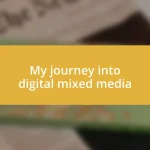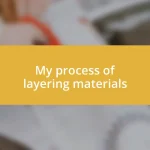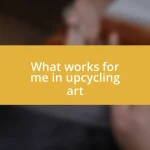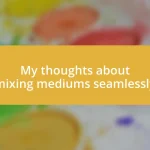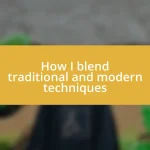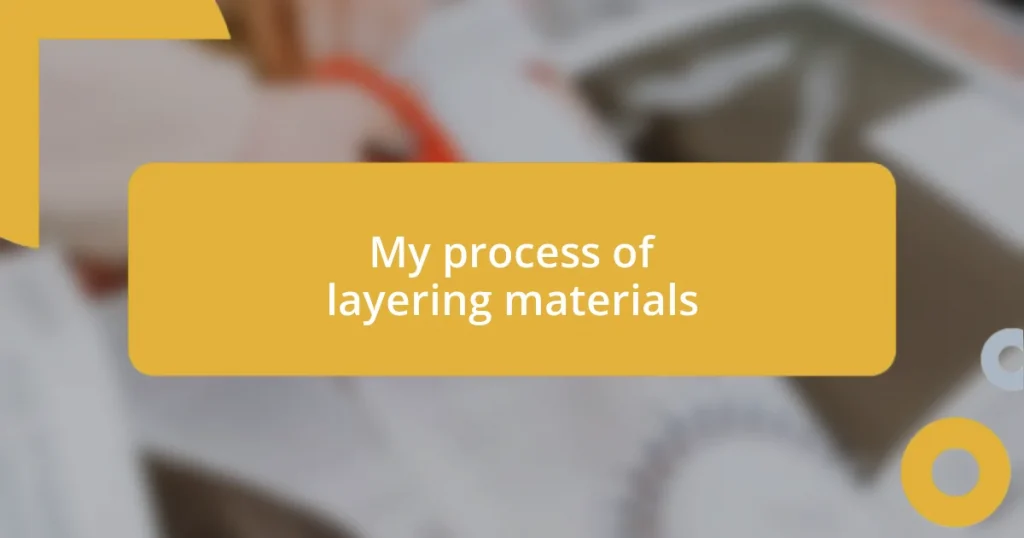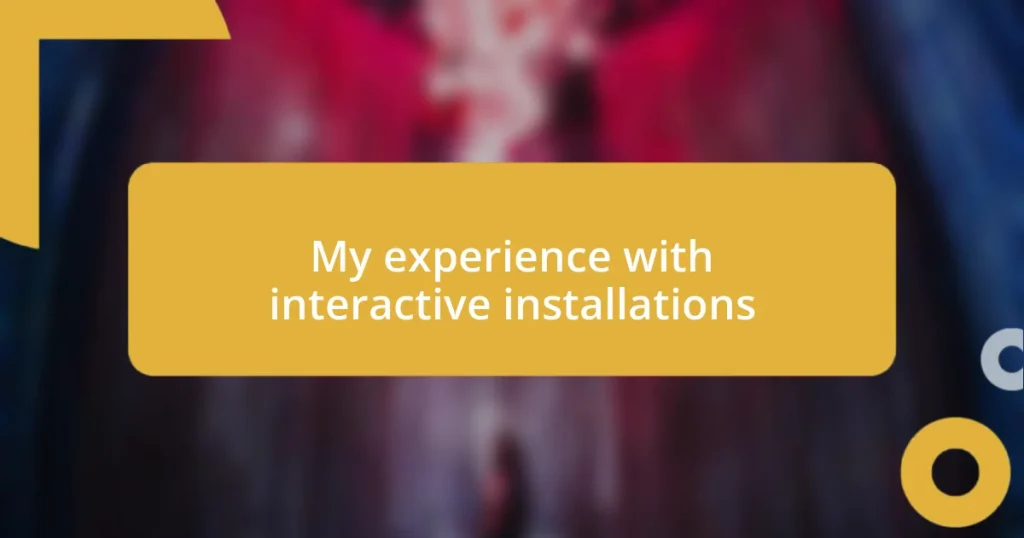Key takeaways:
- Found object art encourages a creative perspective, transforming everyday items into meaningful expressions and storytelling vehicles.
- Benefits of found objects include sustainability, inspiration, personal connection to the materials, and cost-effectiveness, making art accessible to everyone.
- Context and display techniques, such as integrating art into functional pieces, can enhance the impact and connection of found object art with viewers.

Introduction to Found Object Art
Found object art has a unique charm that draws me in every time I encounter it. I remember the thrill I felt when I stumbled upon an old bicycle frame at a flea market. It was rusted and faded, yet brimming with potential—transforming something mundane into a striking piece of art sparked my imagination.
This form of art invites us to rethink our relationship with everyday objects. Have you ever looked at an ordinary item and wondered what stories it could tell? I often find myself contemplating the life of objects discarded and forgotten, each a silent witness to moments that no longer exist but can be revived through creativity.
At its core, found object art celebrates the beauty in the overlooked. I’ve found that the process of creating with these items is not just about aesthetics; it’s a form of storytelling. Each piece I create tells a tale, merging my emotions with the history of the objects I choose, turning the mundane into meaningful expressions. What stories will you uncover when you start looking at your surroundings with a creative eye?

My Journey into Creativity
As I reflect on my journey into creativity, I can’t help but recall the time I found a weathered old shoe by the roadside. It was buried in the grass, partially hidden from view. I saw it as a metaphor for lost paths and forgotten dreams, which inspired a piece that spoke to the resilience of the human spirit.
The excitement of discovering objects is only part of the experience. There was a moment when I pulled together various scraps—a broken mirror, some bottle caps, and an old watch. As I arranged these seemingly useless items, I felt a thrill of possibility. Each placement felt like uncovering layers of a story waiting to be told, and that satisfaction deepened my bond with the process of creation.
Over time, the act of transforming found objects into art has taught me to see beauty everywhere. One rainy afternoon, I collected twigs and leaves from my yard, and in those small pieces, I discovered intricate shapes and colors that delighted me. It felt as if nature itself was revealing its secrets, urging me to explore and innovate further. Isn’t it fascinating how a simple walk can turn into an adventure for the imagination?
| Found Objects | Emotions Evoked |
|---|---|
| Old bicycle frame | Excitement for potential |
| Weathered shoe | Reflection on lost paths |
| Broken mirror | Thrill of discovery |
| Twigs and leaves | Joy of nature’s secrets |

Benefits of Using Found Objects
There’s something truly liberating about using found objects in art. They challenge conventional notions of creativity and make the process accessible to everyone. I remember when I picked up some broken toy parts at a yard sale; instead of seeing trash, I saw a treasure trove of possibilities. This shift in perspective not only encouraged my creativity but also inspired others around me to see the potential in their surroundings.
Here are some of the benefits I’ve discovered in my journey with found objects:
- Sustainability: Using discarded items helps reduce waste and promotes eco-friendly practices.
- Inspiration from Serendipity: You never know what you’ll find, and each discovery can spark unexpected ideas.
- Personal Connection: Every found item carries a unique story, connecting my emotions with something tangible.
- Cost-effectiveness: It’s an affordable way to create art without the pressure of costly materials.
In short, embracing found objects opens doors to creativity that often remain shut. I relish the emotional connection I feel when I create something from what was once considered useless. It’s in these moments that I realize the true magic of found object art.

Displaying Your Found Object Creations
When it comes to displaying my found object creations, I find that the context can elevate the art significantly. I’ll never forget the first time I hung a collection of tiny birdhouses crafted from wood scraps in my garden. The sun streaming through the branches created soft shadows that danced on the ground, transforming my whimsical pieces into part of a living tableau. Have you ever noticed how the right setting can breathe life into an artwork?
I also enjoy experimenting with various display methods. For instance, I once arranged a series of colorful bottle caps on a simple yet striking canvas. The bright hues stood out against the background, each cap reminding me of sunny beach days and childhood memories. It sparked conversations with visitors, prompting them to share their own stories behind similar objects. Isn’t it wonderful how art can serve as a bridge, connecting others through the shared experience of nostalgia?
Another creative approach I’ve taken is incorporating my found objects into functional pieces. I remember transforming an old bicycle wheel into a wall clock. It serves not only as a functional timepiece but also as an eye-catching focal point in my hallway. Displaying art in this way adds layers of meaning, blurring the line between utility and creativity. Have you ever thought about how a practical display can enhance your connection to a piece?
